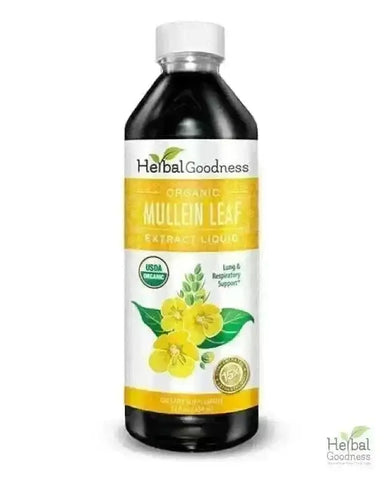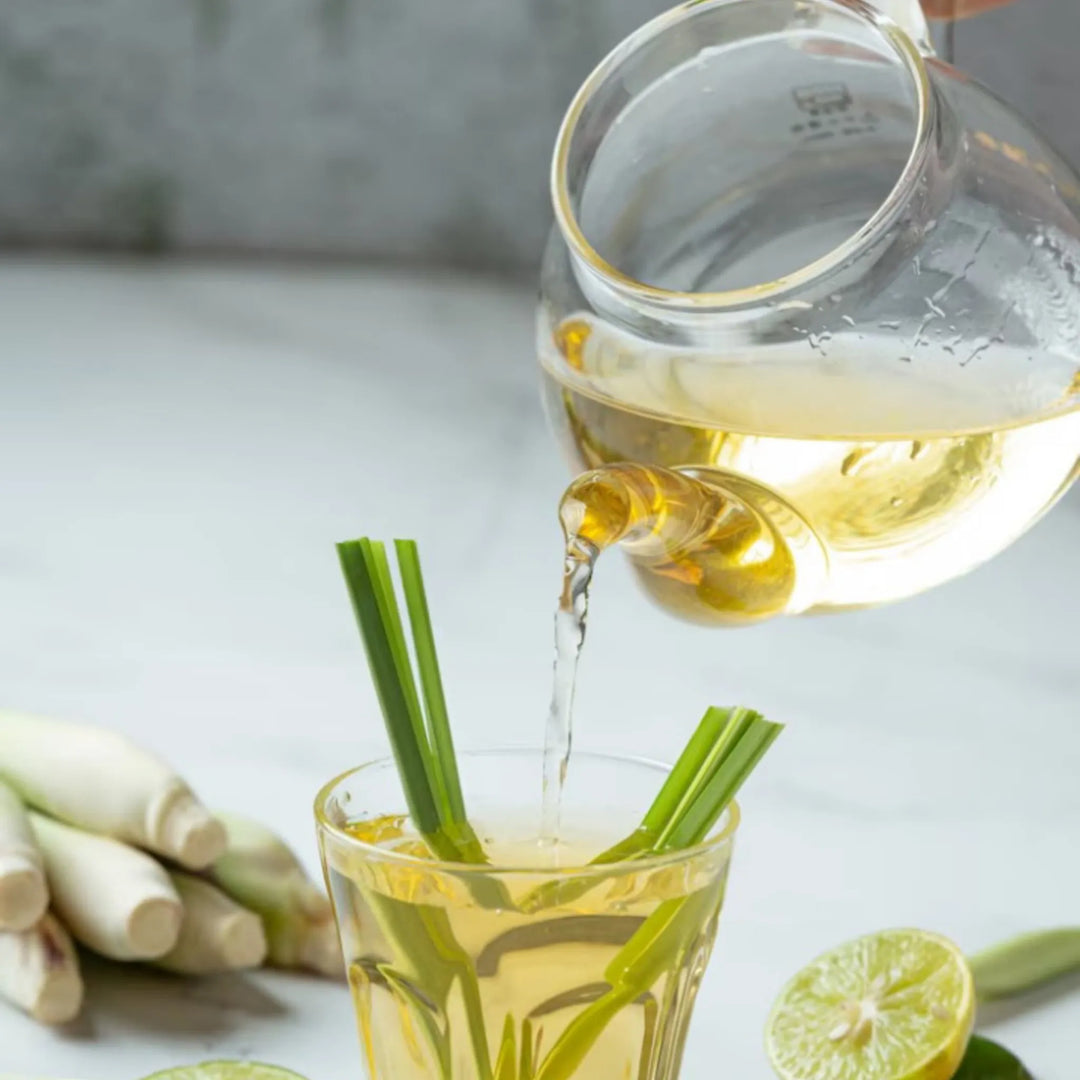Mullein Leaf: Nature’s Soothing Secret for Respiratory Wellness
Mullein leaf (Verbascum thapsus) has long been valued in herbal traditions as a gentle but effective support for lungs, throat, and respiratory comfort. In this article, you’ll learn what mullein leaf is, the research behind mullein leaf extract and its benefits, how to use it safely, and what to look for in a quality product. Whether you’re exploring mullein leaf for lungs, curious about mullein leaf drops, or searching “mullein leaf near me,” this guide will help you make an informed, trustworthy decision.
What Is Mullein Leaf?
Mullein (Verbascum thapsus) is a tall flowering plant known for its soft, fuzzy leaves and yellow blossoms. The leaves are harvested (often from the lower part of the plant) and used fresh or dried to produce teas, tinctures, oils, or extracts.
In traditional herbal medicine, mullein leaf is prized for its mucilaginous texture and association with respiratory support, though modern science is still investigating its full potential.
Key Components of Mullein Leaf
To understand mullein leaf and its traditional uses, it helps to look at what’s naturally found in the plant:
-
Mucilage: A naturally occurring, gel-like plant compound that contributes to the leaf’s smooth texture.
-
Saponins: Plant-based compounds studied for their role in many botanical systems.
-
Flavonoids (such as quercetin, luteolin, and apigenin): Naturally present antioxidants that are widely researched for their occurrence in plants associated with balance and well-being.
-
Phenylpropanoid glycosides & iridoids: Unique plant compounds of scientific interest in the study of botanical diversity.
Ongoing research continues to explore how these naturally occurring compounds interact within plants and may contribute to their traditional use in herbal preparations.
Mullein Leaf: What the Research Explores
Scientific interest in mullein leaf extract continues to expand, with studies focusing on its natural composition and traditional uses. While evidence is still developing, researchers and herbal practitioners have examined various aspects of this plant’s unique properties.
1. Traditional Use for Breathing Ease
Historically, mullein leaf has been part of herbal preparations used in wellness practices centered on ease of breathing and overall comfort. Modern studies have looked at its phytochemical composition, including compounds such as saponins and flavonoids, which are of ongoing scientific interest.
Organizations such as the Cleveland Clinic note that while mullein has been traditionally associated with respiratory well-being, human clinical data remain limited, and more research is needed to confirm how its plant compounds interact in the body.
2. Research on Flavonoids and Plant Compounds
Mullein’s naturally occurring flavonoids and phenolic compounds, including quercetin, luteolin, and apigenin, are being studied for their presence in many plants connected to balance and wellness. Scientists are exploring how these compounds may contribute to the plant’s traditional use in herbal systems, though evidence remains preliminary.
3. Botanical Studies on Plant Integrity
Laboratory research has investigated mullein extracts for their general plant composition and stability. These studies aim to understand how its diverse bioactive compounds contribute to the plant’s structure and natural defense mechanisms. However, findings from these preclinical studies cannot be generalized to human health outcomes.
4. Historical and Cultural Context
Across generations, mullein has held a place in various traditional practices. It has been prepared as herbal tea, tinctures, or topical oils and used in cultural contexts emphasizing comfort and holistic wellness. While these uses are widely recorded in ethnobotanical literature, they remain part of traditional knowledge rather than established scientific consensus.
Balanced Perspective
Overall, mullein leaf extract remains a subject of ongoing research and cultural relevance. Current studies help expand understanding of its plant chemistry and traditional significance, while modern herbal enthusiasts continue to value it as part of a natural wellness lifestyle.
How to Use Mullein Leaf: Forms & Best Practices
Here are common ways people use mullein leaf extract or preparations, and tips for safe and effective use:
Mullein Tea / Infusion
-
Use 1 to 2 teaspoons of dried mullein leaf in a cup of hot water.
-
Steep for 10–15 minutes, then strain carefully through a coffee filter or cheesecloth to remove fine hairs (these can irritate the throat).
-
Drink up to 3–4 cups daily, depending on product instructions.
This method is often preferred for mild, soothing support for the lungs and throat.
Tinctures / Liquid Extracts
These are concentrated mullein leaf extracts (alcohol- or glycerin-based). Dosage varies depending on the product strength. Many users prefer these in small drops (under the tongue or diluted in water) for convenient daily use.
Mullein Leaf Drops / External Use
Some use mullein drops (oil-based) for ear comfort or throat gargles (diluted). When using as mullein leaf drops, ensure you follow product guidance and avoid applying undiluted oil directly into the ear.
Other Preparations
-
Capsules / tablets – ideal for easy dosing and travel convenience.
-
Poultices / topical use – for minor skin irritations, after testing for sensitivity.
Best Practices & Safety Tips
-
Start with small doses to gauge sensitivity.
-
Always strain teas thoroughly to avoid irritation.
-
Avoid during pregnancy or breastfeeding unless advised by a doctor.
-
People with plant allergies should proceed cautiously.
-
Check for possible interactions with medications.
What Makes a Quality Mullein Leaf Product?
If you’re searching for the best mullein leaf extract, here’s what to look for:
-
Certified organic sourcing – ensures clean cultivation practices.
-
Third-party testing – verifies purity, safety, and potency.
-
Transparent ingredient labeling – avoids unnecessary fillers.
-
Standardized extract strength – guarantees consistency.
-
Clear dosing instructions – enhances safety and trust.
At Herbal Goodness, our Mullein Leaf Extract Liquid 12oz – Organic 15X Strength follows these principles. We use organically grown Verbascum thapsus, test for purity, and label our extracts with clear serving instructions to help you get the most from every drop.
FAQ Section
What is mullein leaf good for?
Mullein leaf is traditionally used to support respiratory comfort, help loosen mucus, soothe mucous membranes, and promote general wellness.
How does mullein leaf extract support the lungs?
It acts as an expectorant, helping to thin mucus, while its natural compounds may support airway comfort. Scientific evidence in humans is limited, but traditional use supports its value.
How do I use mullein leaf extract?
You can use it as a tea, tincture, or in drop form. Always follow product guidelines or start with small amounts and increase gradually as tolerated.
Are there side effects of mullein leaf extract?
Side effects are rare, but may include mild skin or throat irritation. It’s best to consult a healthcare provider before use, especially for pregnant women, nursing mothers, or children.
Where can I find mullein leaf extract near me?
Mullein leaf products are available at health food stores, natural product retailers, and online herbal supplement shops.
Is mullein leaf safe for kids?
Scientific data on its safety for children are limited. Only use under professional supervision.
Can I combine mullein leaf with black seed oil?
Some individuals use both for added wellness support. However, always introduce one product at a time and consult a healthcare professional for advice.
Looking for a reliable, high-quality solution?
Try our Mullein Leaf Extract Liquid 12oz – Organic 15X Strength. Crafted with organically grown mullein leaf and thoroughly tested for purity, it’s a simple way to experience nature’s support for respiratory wellness.
Order yours today and discover the difference of pure, authentic herbal care.
Author Name:
Ilomuanya Mmesoma Davina
Author Bio:
Ilomuanya Mmesoma Davina is a Content Writer at Herbal Goodness, where she focuses on creating and optimizing blogs. With expertise in natural health products and SEO-driven storytelling, she is passionate about educating readers on the power of herbs and superfoods for modern wellness.
Related:
References:
-
Healthline: What to Know About Mullein Leaf
-
Cleveland Clinic: How Mullein Benefits Your Lungs
-
PubMed: A Review on the Case of Mullein (Verbascum spp.)
-
WebMD: Mullein — Uses, Side Effects, and More













